By: Jana Peirce, University of Alaska Fairbanks (UAF); Benjamin Jones, UAF; Vladimir Romanovsky, UAF; and Billy Connor, UAF.
On the first Saturday in August 2023, a group of scientists, engineers, planners, and policymakers met in the Usibelli engineering building at the University of Alaska Fairbanks (UAF) to wrap-up an intensive week of discussion and field trips that took them to Utqiaġvik, two coastal villages, the Prudhoe Bay oilfield, and down the Dalton Highway to Fairbanks. The goal of the NSF-funded Permafrost and Infrastructure Symposium was to bring a diverse group of Arctic science and engineering experts together in northern Alaska to see the impacts of permafrost thaw on roads and community infrastructure firsthand and to learn from local experts who design, build, repair, and live with thaw-susceptible infrastructure.
The concept for the event was based on a convergence research model used in Canada to pair scientific and engineering research practices with local knowledge and priorities to develop better strategies for improving Arctic infrastructure. The Symposium combined the principle of convergence (bringing experts from diverse disciplines together to work on a common problem) with the practice of co-production (where community members participate in research as equal partners with scientists) in an event that organizers hoped would be transformative.
What Participants Said
As the microphone was passed around the room at the end of the closing session in Fairbanks, the comments from participants confirmed the sense that had been present all week that something special was happening. "In the past five days, I've learned more than in the past five months, through really seeing it, and equally important, by talking to each of you," reflected Ming Xiao, a professor of civil engineering at Penn State University.
Hina Kilioni of the North Slope Borough (NSB) Port Authority was impressed with how well the scientists were able to translate their work for non-scientists: "There's a time where we get the tone deafness, where you're so focused on your work that you lose sight of the audience. Thank you for sharing your work and creating meaningful dialogue with us, so we can translate your work into actionable items at the community level."
Symposium Co-chair, Billy Connor, commented on the power of convergence witnessed during the Symposium: "Discussions are invaluable where you have people with different expertise looking at the same thing. It requires them to explain things in terms that everyone can understand."
Matt Billings, a Northern Region geotechnical engineer with the Alaska Department of Transportation & Public Facilities (DOT&PF), admitted that driving down the Dalton Highway with the group has caused him to step back and reevaluate some of his previous beliefs, "I'm going to come away with a different perspective and see things in a different light."
As an early career researcher, Eileen Martin, an assistant professor of geophysics and applied math and statistics at the Colorado School of Mines, said she would not have been able to see the number and variety of tundra conditions and infrastructure without this opportunity. "It's really hard to get funding to go and visit sites, especially far-away sites. It wouldn't be possible for me to see these sites until I already get a grant and I'm there doing fieldwork the first time, perhaps messing up for the first time."
The Symposium was the culmination of two years of planning by researchers at UAF and the University of Virginia in collaboration with UIC Science, NREL/Cold Climate Housing Research Center, Red Mountain Consulting, Alaska Department of Transportation and Public Facilities (DOT&PF), North Slope Borough (NSB), and Taġiuġmiullu Nunamiullu Housing Authority (TNHA), the regional housing authority for the North Slope. Planning the Symposium with those who live and work in the Arctic was important to designing an event that would produce usable information to address the societal challenges of a rapidly warming Arctic (Jebeile and Roussos 2023).
Part I: Utqiaġvik Conference
The Permafrost and Infrastructure Symposium kicked off on Saturday, 29 July in Utqiaġvik, Alaska, where over 30 visiting scientists and engineers were joined by 15 North Slope residents at the Barrow Arctic Research Center. Three international participants brought research perspectives from Greenland, Svalbard, and Arctic Canada. The first day began with presentations from directors at the NSB Port Authority, TNHA, and Barrow Utilities and Electric Coop (BUECI) on issues prioritized by North Slope participants during the planning phase (Figure 1), followed by a village panel with community leaders from the Native Village of Point Lay and the City and Village of Wainwright.


Opportunities to learn about Iñupiat culture and how to be good guests on the North Slope were included throughout the Utqiaġvik agenda (Figure 2). On Day 2, participants chose between field trips to Point Lay, Wainwright, and within Utqiaġvik (Figures 3 and 4). The decision to host the conference on the North Slope was easy, if logistically complex. As TNHA Executive Director, Griffin Hagle-Forster, put it, "There is no substitute to being in a place like Point Lay. It's an efficient way to do away with a whole bunch of assumptions. There is never a better way to get more people on the same page faster, so we can move onto the next phase faster."
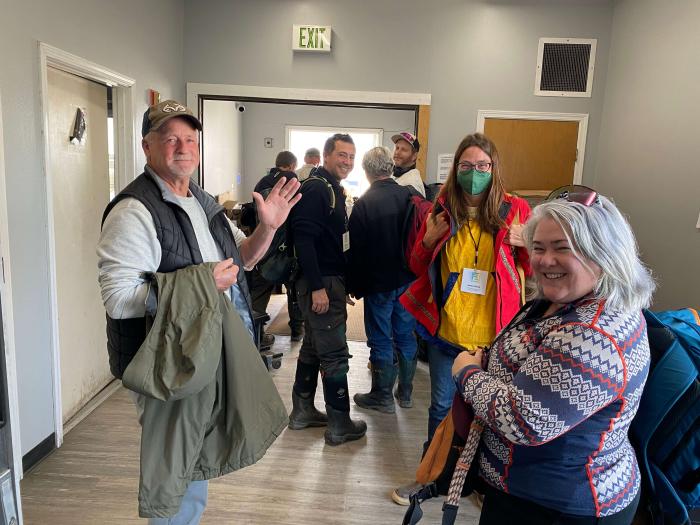
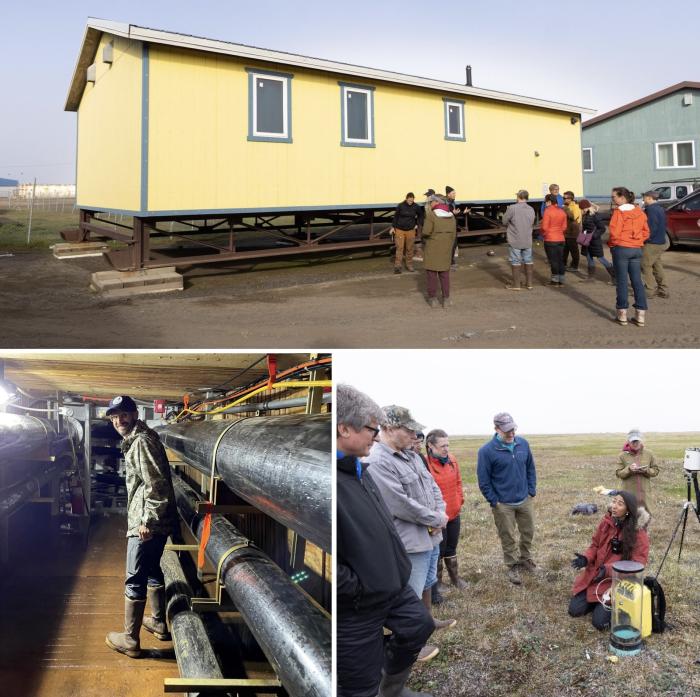
In Figure 4, the TNHA innovative "sled home" designed with an adjustable, portable foundation, was featured on PBS NOVA in 2022. Finding better solutions for foundations built on ice-rich permafrost was one of the topics prioritized by North Slope partners in planning the Symposium.
On Day 3, the participants once again divided into groups, this time to share knowledge aimed at solving some of the most complex climate-related challenges faced by Arctic communities. Breakout topics included a case study of permafrost thaw issues in Point Lay; coastal flooding and erosion in Wainwright; tools for monitoring and adapting to change; and applying research with community needs in mind (Figure 5). By planning a single event with participants from multiple science projects, Symposium organizers sought to enhance information sharing and synergies between projects while reducing the demands of outreach and engagement (sometimes referred to as "research fatigue") on local communities and research partners.
The rapid dissemination of results was one of several NSF strategic objectives the Symposium sought to put in practice. Another was promoting impact-driven, use-inspired research. The Utqiaġvik conference ended with a morning presentation to the NSB Assembly and Borough Mayor to share insights and recommendations from the Symposium, which was broadcast live on KBRW radio (Figure 6).
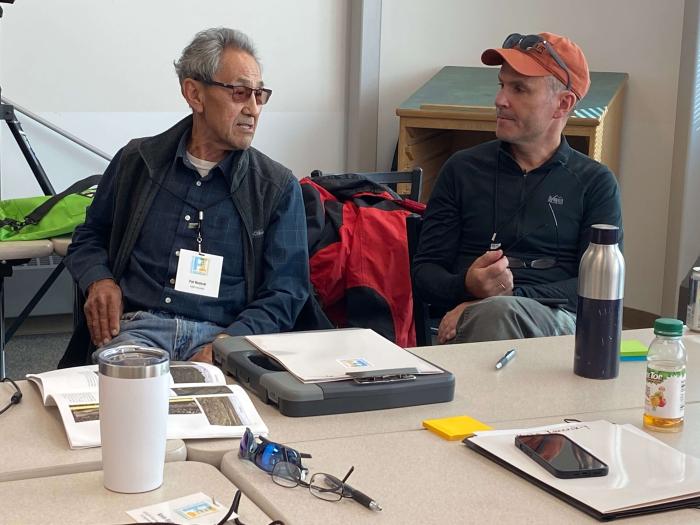
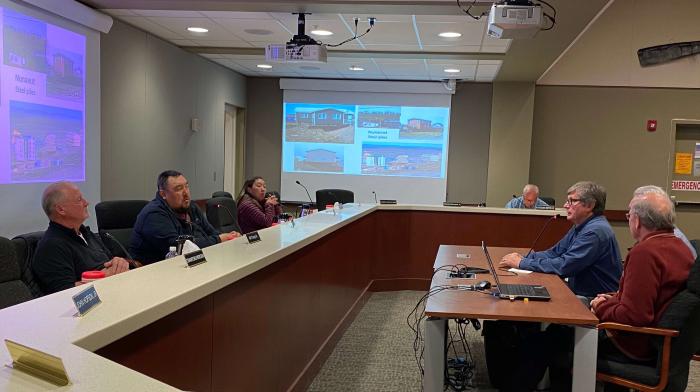
Part II: Dalton Highway Excursion
For the second half of the Symposium, 18 participants continued to Deadhorse to look at transportation infrastructure and permafrost landscapes in Prudhoe Bay and along the 416-mile Dalton Highway during a three-day excursion by motor coach. They were joined on the drive south by geotechnical engineers and construction managers from Alaska DOT&PF Northern Region who described construction challenges and the adaptive strategies being used to preserve permafrost beneath road embankments. The group observed the results of different methods used in tundra restoration and rehabilitation projects during a tour of the Prudhoe Bay oilfield and the Dalton Highway corridor (Figure 7).


The closing half-day session at UAF focused on transportation policy with presentations by the Commissioner of Alaska DOT&PF and climate policy specialists at the US Department of Transportation (USDOT). After lunch, participants left on a final field trip to the Permafrost Research Tunnel maintained by the Cold Regions Research and Engineering Laboratory near Fox, Alaska.
Outcomes
The connections made and information shared at the Symposium are already having an impact. Before the Symposium ended, the recommendation to the NSB to fill in beneath homes and ponds in Point Lay with fine-grained material were being acted on as an outcome of the 1 August workshop with the NSB Assembly. Other conversations started at the Symposium have continued, including discussions with Alaska DOT&PF on laying fiber optic cable for geophysical monitoring along the Dalton Highway, and harvesting tundra sod from new gravel pits for use in restoration.
At George Mason University, dynamic Arctic shipping models are being extended to incorporate whale-related subsistence seasons, based on discussion with local participants in Utqiaġvik. Material developed from the Dalton Highway excursion has been incorporated into a new graduate course in Cold Regions Engineering at the University of Pennsylvania. Knowledge about North Slope infrastructure has been included in an Arctic engineering curriculum for Greenlandic students as a comparison with challenges seen in Greenland.
The Symposium has resulted in new proposals and new collaborations between institutions. A proposal to NSF is being developed to better monitor and predict permafrost degradation and its impact on civil infrastructure. Danish researchers are developing a proposal for community engagement and capacity building that is informed by community challenges on the North Slope, and the way these challenges are addressed locally and by national and international research communities.
The US Army Corps of Engineers' Cold Regions Research and Engineering Lab will be working with the Ukpeaġvik Iñupiat Corporation on a project in the North Slope village of Kaktovik, Alaska, and possibly one in Point Lay. Researchers from the Alaska Division of Geological and Geophysical Services (DGGS) said the Symposium helped accelerate its big ASTAR project and expand on other opportunities. After attending the Utqiaġvik conference, a local resident is looking for grant opportunities to monitor his own property as a way to better understand climate change.
These and other outcomes were shared by participants in six-month post-Symposium evaluation. Recommendations for future events modeled on the Permafrost & Infrastructure Symposium were also shared and are included in a final report on the Symposium which is in-preparation. Proceedings of the 2023 Permafrost & Infrastructure Symposium, including presentation slides and recordings, post-symposium reflection papers contributed by participants, reports, and recommended readings are being added to an Arctic Data Center portal.
Funding
The Symposium was funded by the National Science Foundation (OPP 2232922), with additional resources provided by NSF-funded projects Permafrost Coastal Systems Network (OISE-1927553) and Landscape Evolution and Adapting to Change in Ice-rich Permafrost Systems; by U.S. DOT through a grant to UAF's Arctic Infrastructure Development Center; and support from UIC Science.
References
Jebeile, J., & J. Roussos. 2023. Usability of Climate Information: Toward a New Scientific Framework. WIREs Climate Change, 14(5):e833. doi:10.1002/wcc.833JEBEILE and ROUSSOS9of9
About the Authors
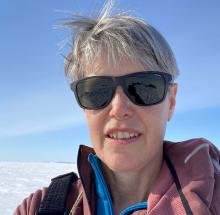 Jana Peirce is the Principal Investigator (PI) of the Permafrost & Infrastructure Symposium. She is a project coordinator, communications specialist, and data manager at the Alaska Geobotany Center at UAF's Institute of Arctic Biology. She coordinates outreach and coproduction with the community of Point Lay, Alaska, for two NSF Navigating the New Arctic projects. Prior to joining UAF full-time in 2019, Peirce was a senior consultant with Information Insights, an Alaska public policy and management consultancy providing research-based consulting and planning services to clients throughout rural and urban Alaska.
Jana Peirce is the Principal Investigator (PI) of the Permafrost & Infrastructure Symposium. She is a project coordinator, communications specialist, and data manager at the Alaska Geobotany Center at UAF's Institute of Arctic Biology. She coordinates outreach and coproduction with the community of Point Lay, Alaska, for two NSF Navigating the New Arctic projects. Prior to joining UAF full-time in 2019, Peirce was a senior consultant with Information Insights, an Alaska public policy and management consultancy providing research-based consulting and planning services to clients throughout rural and urban Alaska.
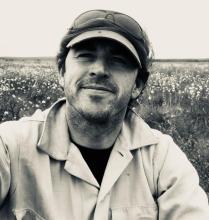 Benjamin M. Jones is the PI of the Permafrost Coastal Systems Network, whose mission is to link efforts of existing research networks to develop protocols for assessing impacts on Arctic coastal systems and identify potential solutions. A Research Associate Professor in the Institute of Northern Engineering at UAF, his research focuses on Arctic and sub-Arctic systems and combines the use of GIS and remote sensing techniques with field observations and laboratory analyses to better understand the causes and consequences of landscape change, processes, and feedbacks in northern high-latitude environments across a multitude of spatial and temporal scales.
Benjamin M. Jones is the PI of the Permafrost Coastal Systems Network, whose mission is to link efforts of existing research networks to develop protocols for assessing impacts on Arctic coastal systems and identify potential solutions. A Research Associate Professor in the Institute of Northern Engineering at UAF, his research focuses on Arctic and sub-Arctic systems and combines the use of GIS and remote sensing techniques with field observations and laboratory analyses to better understand the causes and consequences of landscape change, processes, and feedbacks in northern high-latitude environments across a multitude of spatial and temporal scales.
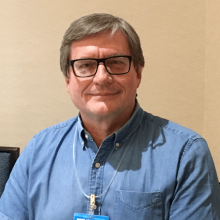 Vladimir Romanovsky serves as the Permafrost Co-chair of the Permafrost & Infrastructure Symposium. Professor Emeritus in Geophysics at the Geophysical Institute and the Department of Geosciences, University of Alaska Fairbanks, his work involves internationally coordinated research on permafrost temperature changes in Alaska, Russia, Canada, Greenland, Kazakhstan, and Mongolia. He is involved in numerical modeling of past, present and future permafrost dynamics and the remote sensing of permafrost and periglacial processes. His research interests include the scientific and practical aspects of environmental and engineering problems involving ice and permafrost.
Vladimir Romanovsky serves as the Permafrost Co-chair of the Permafrost & Infrastructure Symposium. Professor Emeritus in Geophysics at the Geophysical Institute and the Department of Geosciences, University of Alaska Fairbanks, his work involves internationally coordinated research on permafrost temperature changes in Alaska, Russia, Canada, Greenland, Kazakhstan, and Mongolia. He is involved in numerical modeling of past, present and future permafrost dynamics and the remote sensing of permafrost and periglacial processes. His research interests include the scientific and practical aspects of environmental and engineering problems involving ice and permafrost.
 Billy Connor serves as the Infrastructure Co-chair of the Permafrost & Infrastructure Symposium. He worked as a transportation engineer for Alaska DOT&PF for over 30 years, managing the department's research program for much of that time. He is currently Director of the Alaska Infrastructure Development Center at UAF, where he manages the Institute of Northern Engineering's infrastructure program, which averages over $2 million annually in research. He recently led the development of a synthesis of practice for building and maintaining roads and airports over permafrost.
Billy Connor serves as the Infrastructure Co-chair of the Permafrost & Infrastructure Symposium. He worked as a transportation engineer for Alaska DOT&PF for over 30 years, managing the department's research program for much of that time. He is currently Director of the Alaska Infrastructure Development Center at UAF, where he manages the Institute of Northern Engineering's infrastructure program, which averages over $2 million annually in research. He recently led the development of a synthesis of practice for building and maintaining roads and airports over permafrost.
